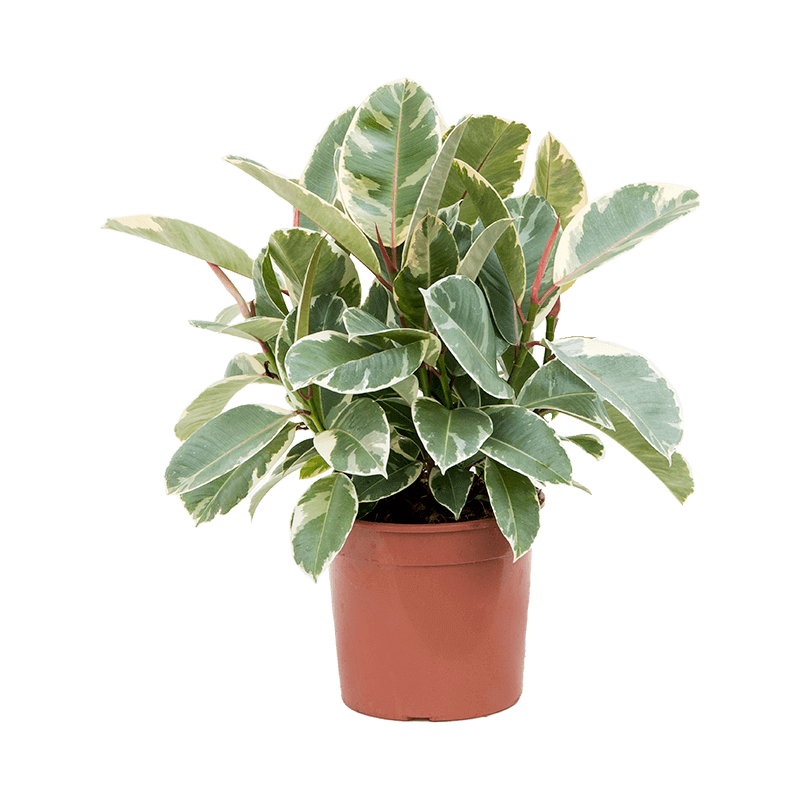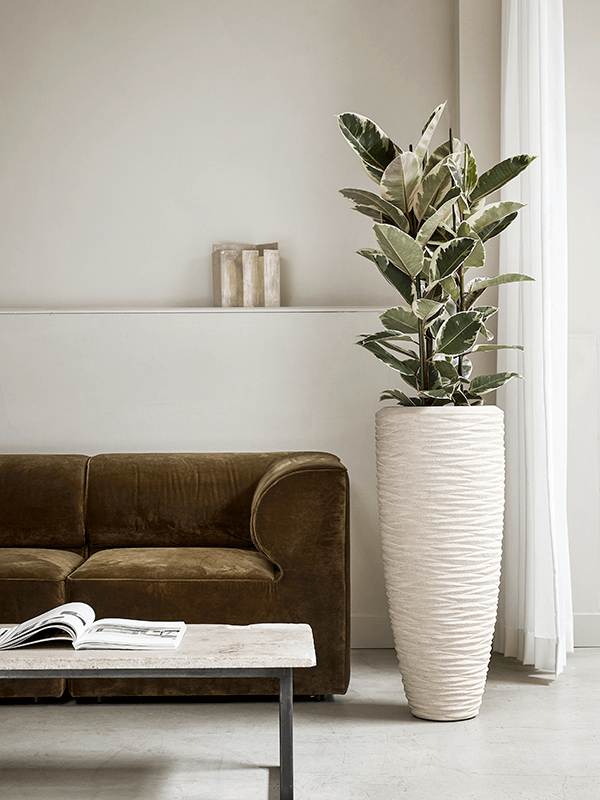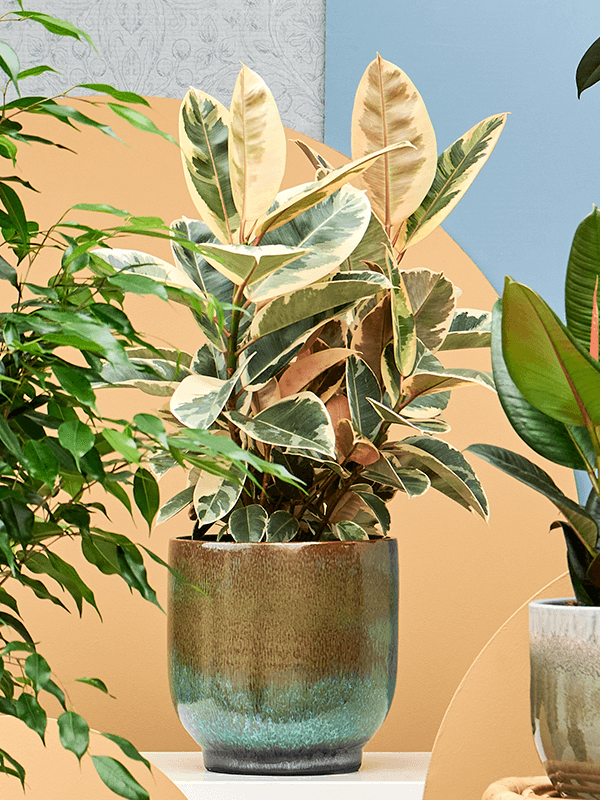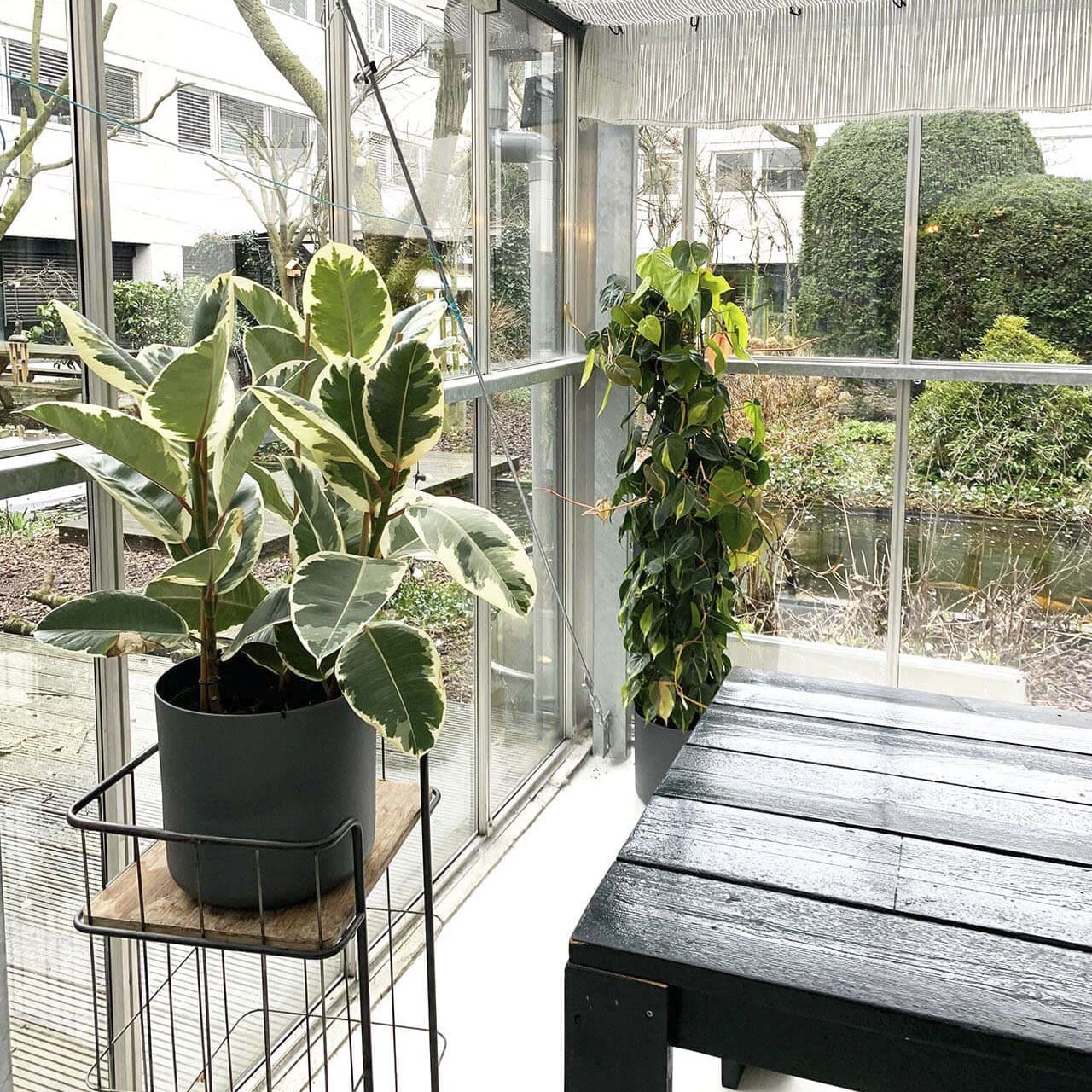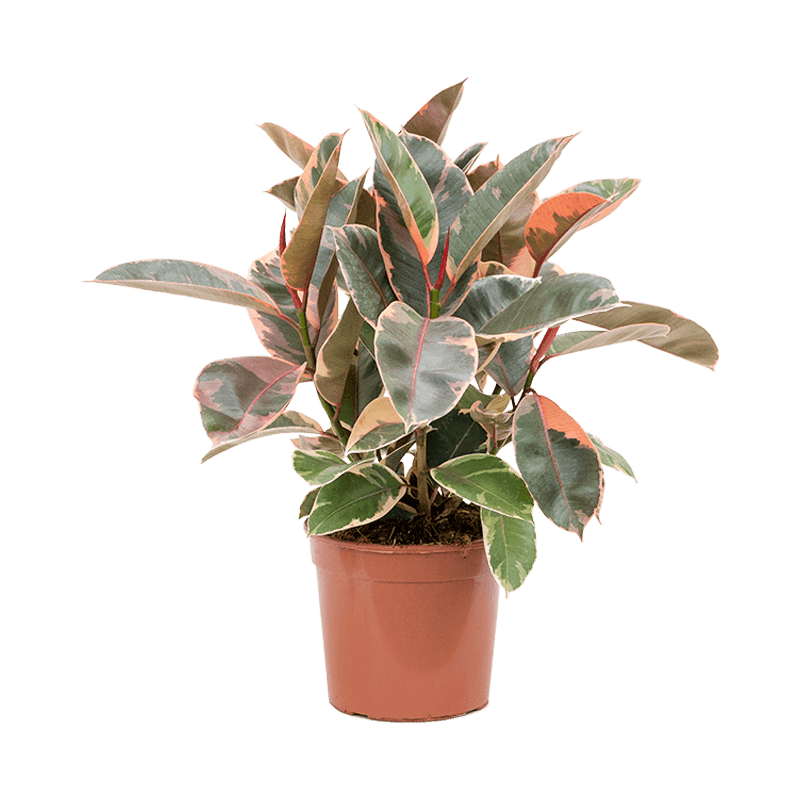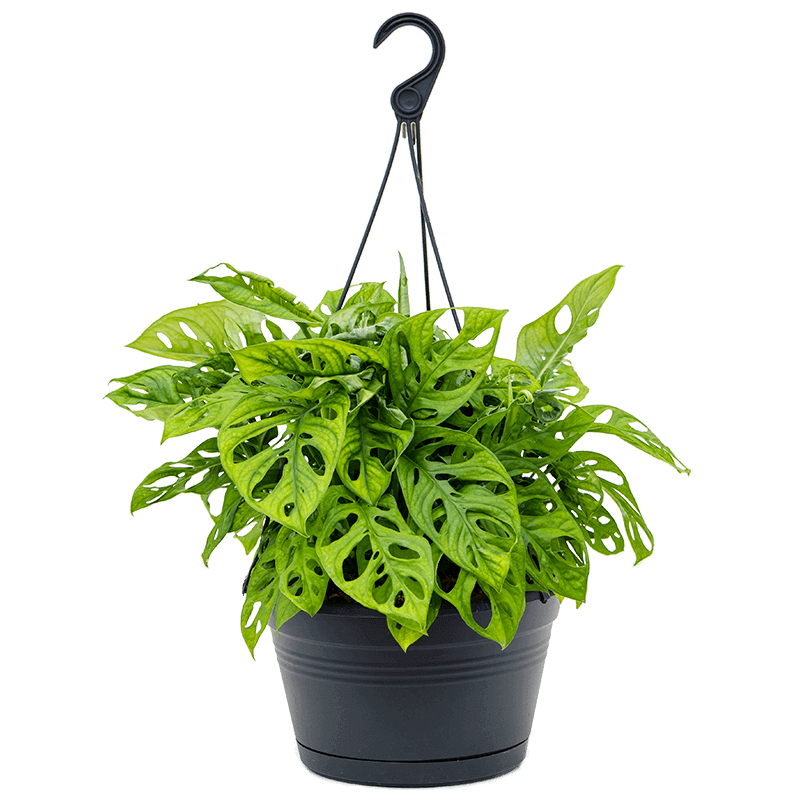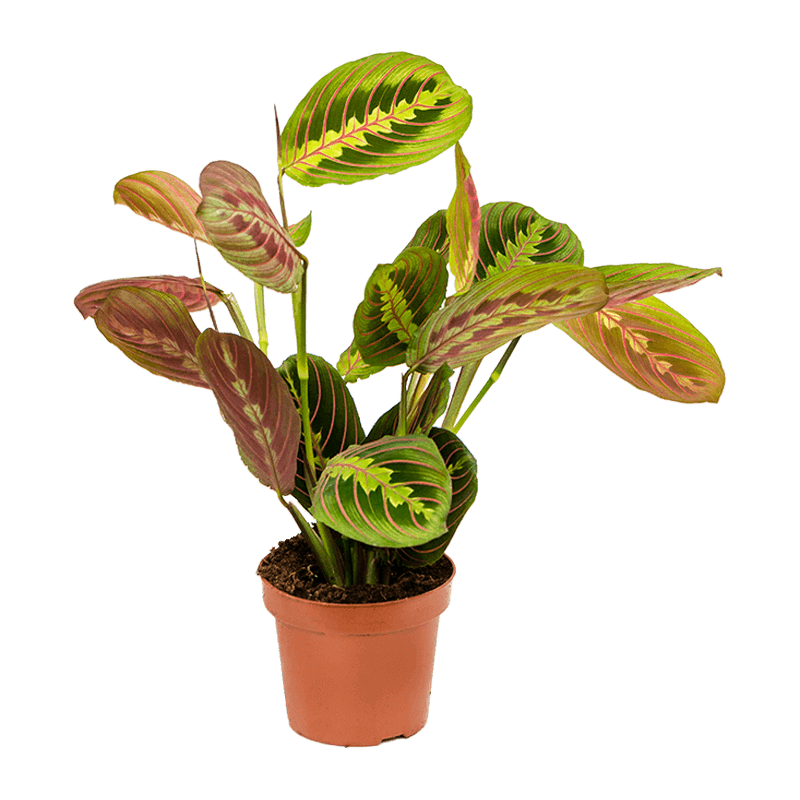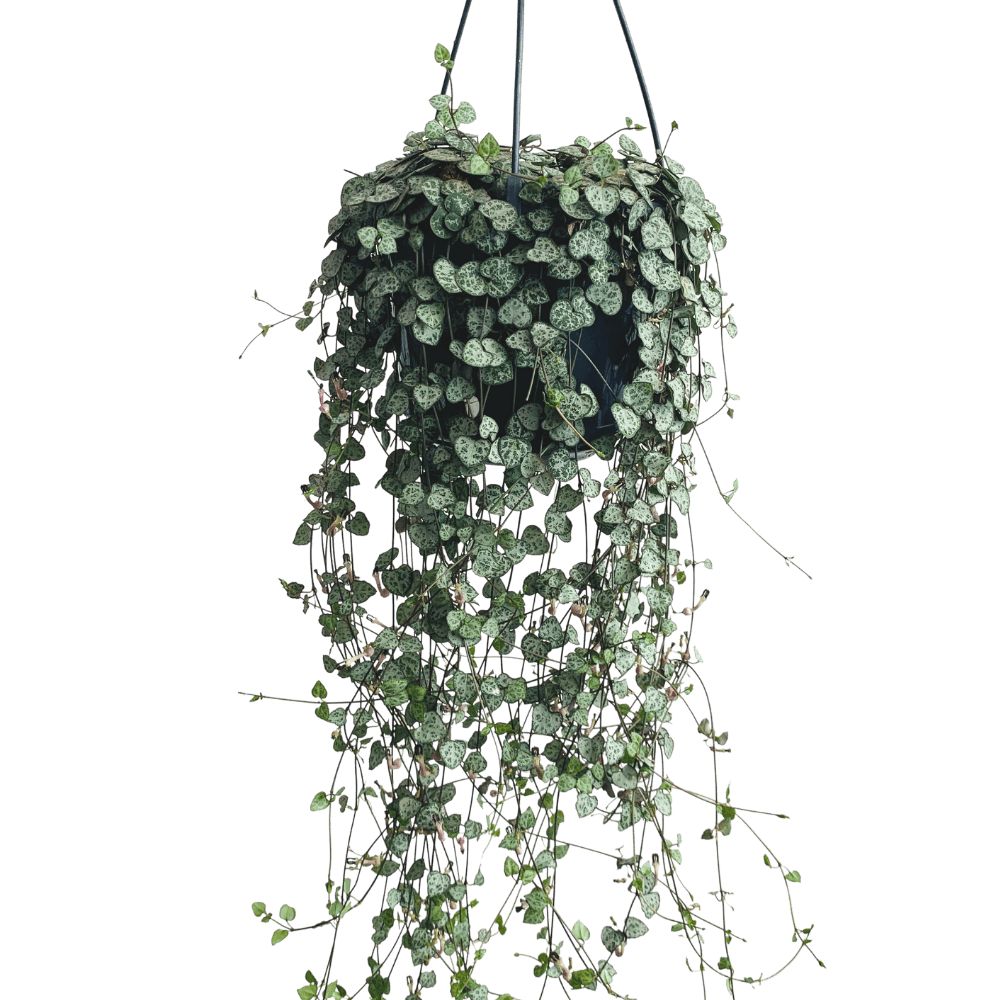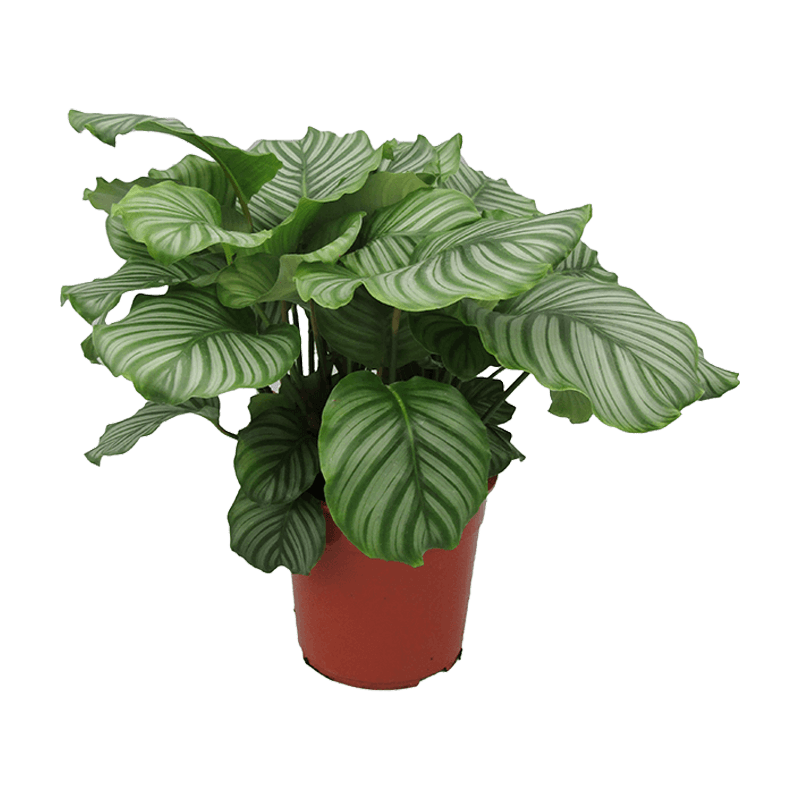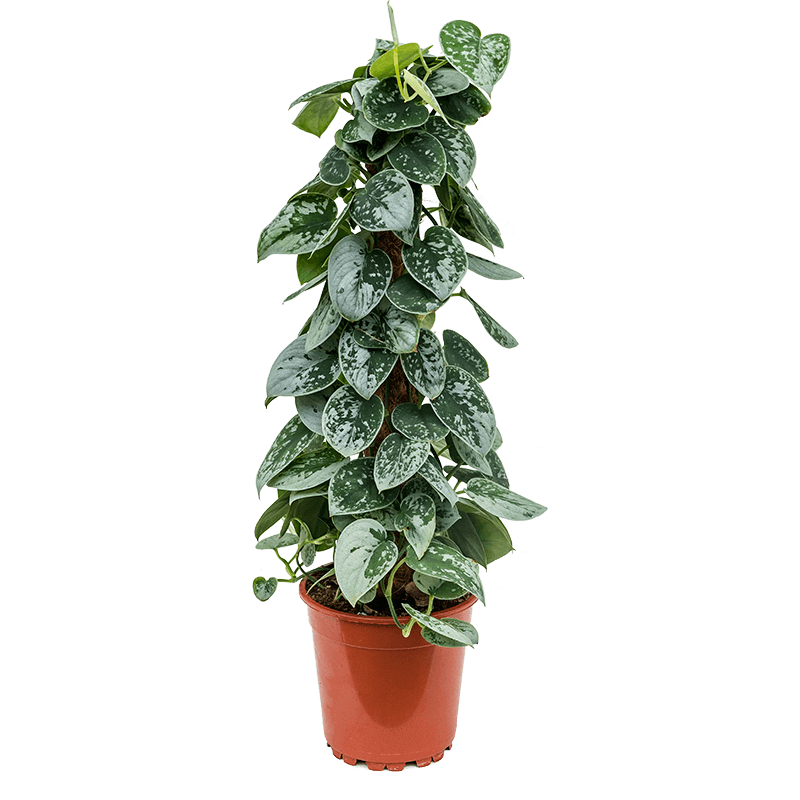how to care for ficus elastica
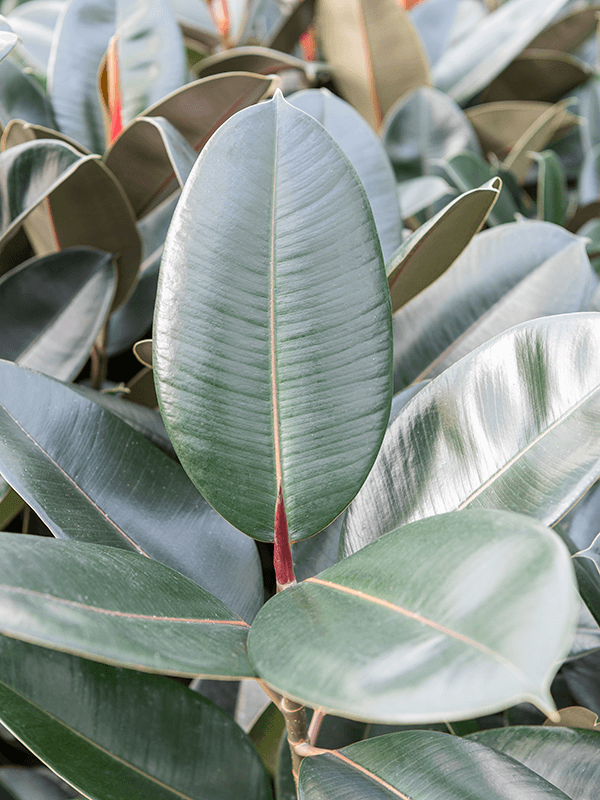
quick care guide for ficus elastica
 |
Every week in summer; every two weeks in winter |
 |
Loves bright, indirect sun |
 |
Fertilize once a month in the summer only |
 |
Toxic to pets |
 |
Strong air purifier |
Grow your Ficus Elastica (a.k.a. Rubber Plant) in soil that drains well, create moderate humidity and keep temperatures between 10°C to 29°C. Water when the top inch of soil becomes dry and fertilize monthly.
detailed care guide for ficus elastica
Scientific Name: Ficus Elastica – also known as Rubber Tree, Rubber Plant
Varieties: (list only includes most popular rubber plants kept indoors)
- ‘Robusta’ – large oval leaves that are shiny and dark green
- ‘Burgundy’ – deep burgundy colored leaves that look almost black; new foliage is bright red
- ‘Tineke’ – variegated rubber plant with glossy leaves in shades of green with white edges with red veins.
- ‘Ruby’ – red-pink and white leaves with hints of green
- ‘Doescheri’ – variegated leaves in gray and cream with pink ribs
- ‘Tricolor’ – green leaves with patches of pink and cream
Origin: Southeast Asia – from the Himalayas to Sumatra, Malaysia and Java
Light: A nice brightly lit spot is ideal, without direct sunlight
Water: Water once the soil becomes slightly dry to the touch and make sure the pot has sufficient drainage holes to allow excess water to seep through. Don’t let her sit in water.
Soil: The best type of growing medium should contain equal quantities of peat, pine bark, and perlite. You can also do 50/50 mix of potting soil and peat as long as it drains well when you run the pot under water.
Temperature: 10°C – 29ºC
Fertilizer: Every month during growing season. Flush the soil several times per year to avoid buildup.
Humidity: Is very sensitive to dry air so don’t place her near a heating or air vent. Mist regularly – you can never spray her too much. The Ficus Elastica also does especially well in a sunny bathroom.
Pruning: You can cut off the top of the plant once in reaches the desired height. This will encourage fuller, bushier growth
Re-Potting: Can be repotted every one or two years, when it becomes root bound (roots sticking out of the bottom)
Propagation: Can be propagated from cuttings.
Diseases and Pests: Relatively pest- and disease-free. The biggest disease threat is root rot, which is caused by overwatering and the soil remaining too wet for too long due to heavy soils that don’t drain properly, or planting in a pot that is too big for the plant.
Toxicity: Rubber Trees are toxic – keep out of reach from pets and small children. Take care when pruning as the milky white sap can be irritating for the skin.
ficus elastica origins & overview
The rubber tree plant— botanical name is Ficus Elastica—is a hardy houseplant that is very easy to care for. The plant also has names such as Indian rubber tree, rubber fig, and Indian rubber bush. Its thick, glossy, leathery green leaves and fast, tall growth mean that rubber plants add to the aesthetics of any room. Ficus elastica is one of the 900 species of trees and shrubs in the genus Ficus. The ornamental rubber tree houseplants can grow as a small desktop plant or a large rubber indoor tree to add visual height. Some of the attractive species of these Ficus plants have variegated green and creamy white leaves. The common name of the species—rubber tree or rubber plant—comes from its milky white sap that can be used to make rubber. This white sap oozes out of the rubber plant’s leaves and woody stems if they’re cut or scratched.ficus elastica light requirements
When it comes to preferred light conditions for the best growth, where you place your Rubber Plant depends on what type you are growing. Those with solid green leaves can take lower indoor light conditions than variegated types. To keep the colors at their best, place variegated Rubber Plants in a location that receives bright, indirect light. Placing it in a location with low light conditions will make the plant lose some of the color on its foliage. Green types also tolerate bright, indirect light conditions indoors, but will also tolerate areas where the light is a bit lower. Whatever you do, don’t place either the green types or variegated types in a location where it receives direct sunlight or the leaves can become sunburned. A good measure for the proper brilliance of a room is to keep the plant in a room where one’s shadow can be easily seen on the wall behind the plant throughout the course of the day. Leaf loss is a very common occurrence in Rubber Plant kept in areas that are too dark or too drafty. When growing Rubber Plant indoors, avoid drafty areas near large windows, air vents, and opening doors.how to water the ficus elastica
Proper watering is crucial to the health of your rubber plant. To water your indoor Ficus, give the soil a good drenching. Soaking the soil allows the roots to get hydrated. But you need to guard against overwatering. So, only water the plant when the top 2.5 – 5 cm of soil is dry. How often should you water a rubber plant? The simple answer is to water rubber trees as often as the soil partially dries out. To tell when it’s time to water your plant, poke your finger about 5 cm into the soil. If the medium is dry, then it’s time to give your plant a deep watering. A rubber plant that sits in water for too long usually ends up suffering. You can avoid a dying rubber plant by allowing all the water to drain from the soil. Also, make sure that water doesn’t collect in the saucer. Top care tip when watering rubber plants: Allow water to sit out overnight before watering. This allows harmful chemicals in tap water to evaporate and get the water up to room temperature—ideal for watering any type of houseplant.repotting the ficus elastica
- Gently remove the Rubber Plant from the container it’s growing in and carefully tease the roots apart if they want to start wrapping.
- Fill the new container up about a quarter of the way full with a fertile, well-drained potting mix.
- Place the Rubber Plant into the new container and fill the remainder of the way up with soil. Make sure you don’t plant it any deeper than it was originally growing in its original pot. Firm the soil around the base of the plant using your hands.
- After planting, water the Rubber Plant to saturate the root system. Water until it runs from the bottom drain holes.
- Place the Rubber Plant in a location indoors that receives bright, indirect light.

Decorative pots are approx. 11 cm.

Plants have a diameter of 11 to 13 cm.
Decorative pots are approx. 14 cm.

Plants have a diameter of 14 to 16 cm.
Decorative pots are approx. 17 cm.

Plants have a diameter of 17 to 19 cm.
Decorative pots are approx. 20 cm.

Plants have a diameter of 20 to 24 cm.
Decorative pots are approx. 25 cm.
extra small |
Plants - 8 to 10 cm diameter Pots - 11 cm |
small |
Plants - 11 to 13 cm diameter Pots - 14 cm |
medium |
Plants - 14 to 16 cm diameter Pots - 17 cm |
large |
Plants - 17 to 19 cm diameter Pots - 20 cm |
extra large |
Plants - 20 to 24 cm diameter Pots - 25 cm |

